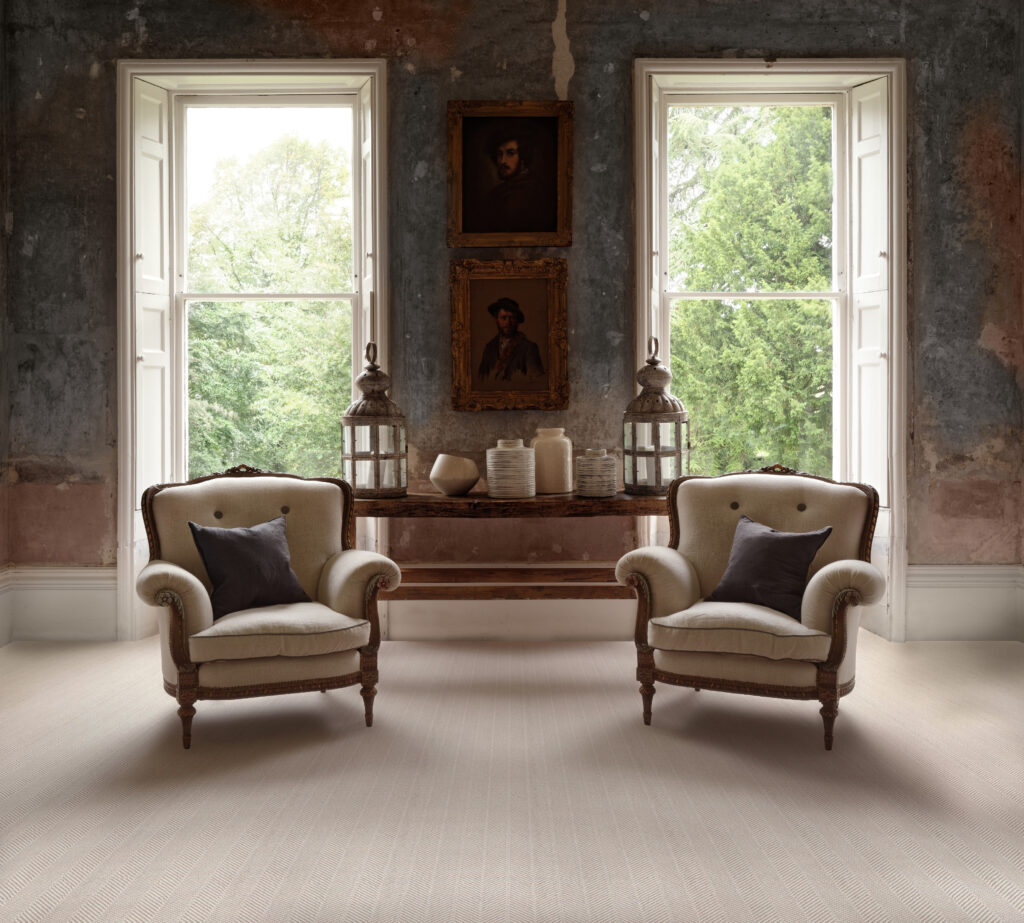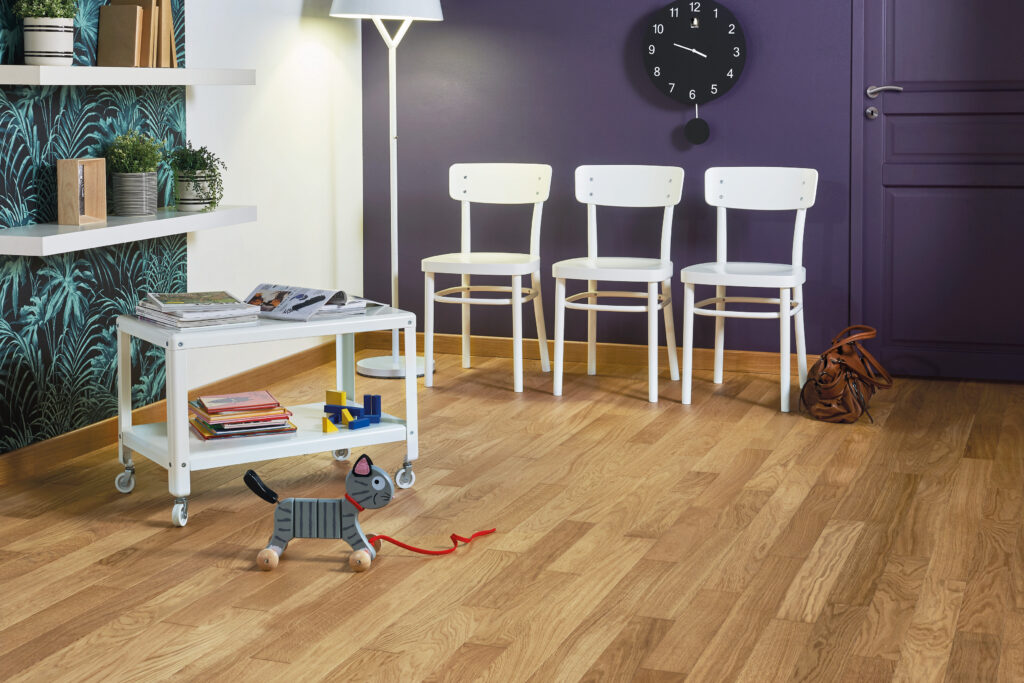How to choose sustainable flooring
A guide for eco-conscious homeowners
Choosing sustainable flooring is a great way to reduce your environmental footprint while enhancing the beauty and comfort of your home. With more eco-friendly materials on the market, it’s easier than ever to find a flooring option that aligns with your values.
But how do you choose the right one? This guide will walk you through the key considerations when selecting sustainable flooring.

1. Look for renewable materials
The most sustainable flooring options are made from renewable resources. These are materials that can regenerate quickly without causing harm to the environment.
Some top choices include:
Reclaimed Wood: Rather than cutting down new trees, reclaimed wood repurposes old timber from buildings or barns. It offers a rustic aesthetic while reducing the need for fresh resources.
100% wool carpets: As a natural fibre it is 100% biodegradable. Wool is a natural insulator, keeping your house warmer in the winter and cooler in the summer. Wool carpet requires 15–30 percent less energy to produce than carpet made from synthetic fibres. Wool is a rapidly renewable and sustainable material that is regrown in 12 months, making it a very good choice for sustainable flooring, that feels luxurious underfoot.

Natural Carpets: Plant based materials such as sisal, seagrass, coir and jute are all very eco-friendly carpet choices. They are natural plant fibre carpets that look amazing, feel great underfoot and tread lightly on the planet. Take a look at our natural carpet page.
Hardwood: Seemingly the most obvious choice for sustainability, due to its long history of being used this way. However given that trees are harvested at a much higher volume now, deforestation is occurring on a huge scale. Ted Todd will only use certified floors, harvested as part of responsible and sustainable forest management. Read more on Hardwood.
2. Check certifications
To ensure you’re choosing eco-friendly flooring, look for certifications from recognised environmental organisations. These certifications indicate that the flooring has been manufactured in a way that meets sustainability standards:
FSC (Forest Stewardship Council): FSC certification ensures that wood flooring comes from responsibly managed forests. Read more about their standards.
Cradle to Grave Certified: This certification assesses products for their environmental impact throughout their lifecycle, from production to end-of-life disposal.
Woolkeepers: A certification program that ensures the wool used in products comes from farms committed to high standards of animal welfare, environmental care, and fibre quality. It creates a transparent supply chain by verifying each stage of wool production, from farm to finished product. Woolkeepers™ partners with farmers who meet rigorous criteria for ethical and sustainable wool practices, which helps build trust among consumers who want eco-friendly and ethically sourced wool. Learn more.
3. Consider Durability
Sustainability isn’t just about how the flooring is produced—it’s also about how long it will last. Durable floors that don’t need to be replaced frequently reduce the overall environmental impact. Hardwood, for example, can last for decades if properly maintained. LVT offers good longevity, with multiple wear layers and on some products *life time guarantees!

4. Think about end-of-life disposal
What happens to your flooring when it reaches the end of its life? Sustainable flooring should be biodegradable, recyclable, or reusable. For example, reclaimed wood can often be repurposed again, and many types of natural flooring like cork or bamboo can biodegrade.
LVT brand Amtico pledge to put 100% of pre-production waste back into flooring or recycled into other products, as do TARKETT.
5. Evaluate the manufacturing process
Flooring that’s manufactured using less energy or that involves minimal processing is generally more sustainable. Look for flooring that:
- Uses non-toxic adhesives and finishes, which reduce harmful emissions during installation and use.
- Is locally sourced to reduce the carbon footprint from transportation.
- Involves minimal water usage and has low embodied energy (the energy used in production and transport).
6. Choose low-VOC or VOC-free options
Volatile organic compounds (VOCs) are chemicals that can off-gas from building materials, including flooring, and negatively affect indoor air quality. When choosing sustainable flooring, opt for low-VOC or VOC-free products.
TARKETT pioneers of flooring solutions with low and ultra-low VOC emissions since 2011, offering products with VOC emission levels that are between 10 and 100 times lower than the most stringent world standards.
QUICKSTEP Laminate and wood floors are 10 times lower than the EU standards.
LVT brands Amtico and Karndean both boast low VOC emissions.
7. Explore innovative options
New sustainable flooring technologies are continually emerging. For example, recycled carpets such as Alternative Floorings car-PET range, made from plastic bottles offer an eco-friendly choice for homes looking for soft flooring with a low environmental impact.
Furlong Flooring launched a Eco Sense Collection, a line of carpets made exclusively from 100% recycled polyester or polypropylene yarn.
Sedna® carpet is soft, luxurious and durable. It is made with ECONYL® regenerated nylon, a yarn made from recycled waste material such as old carpets and abandoned fishing nets collected from the bottom of the sea.
All of these are available to view in our wonderful showroom.

8. Consider maintenance and cleaning
Sustainable flooring should be easy to maintain with non-toxic cleaning methods. Materials like LVT and Laminate can often be swept and washed simply with warm water.
Conclusion: Choosing sustainable flooring for your home is a great way to combine style, durability, and environmental responsibility. By considering renewable materials, certifications, durability, and end-of-life disposal, you can make a choice that benefits both your home and the planet. Not only will you enjoy a beautiful, high-quality floor, but you’ll also have the peace of mind that comes from knowing you’ve made an eco-friendly decision.
Ready to make the switch? Our showroom offers a range of sustainable flooring options, and we provide a free measure and quote service to help you get started on your eco-friendly renovation journey!
* Amtico Signature Range

